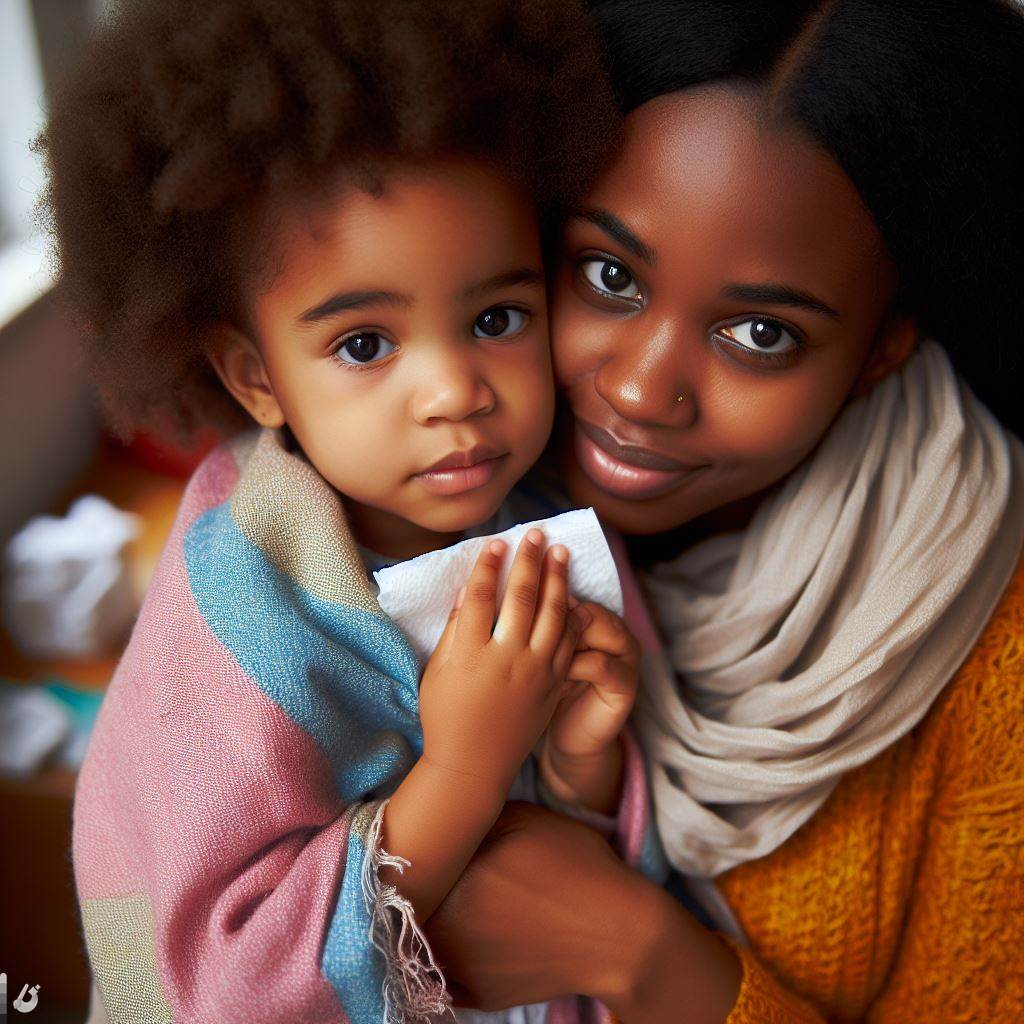Introduction
Importance of Infant Sleep Safety
Infant sleep safety is paramount for Nigerian parents. Safety practices ensure peaceful, secure sleep for babies.
Safety measures prevent sudden infant death syndrome (SIDS). They create a conducive sleep environment for infants.
Nigerian parents face challenges in accessing accurate sleep safety information. This chapter aims to bridge that knowledge gap.
Purpose of the Blog Post
The purpose is to equip Nigerian parents with essential infant sleep safety guidelines.
This blog chapter intends to educate and empower parents with actionable strategies.
It’s crucial to highlight the dos and don’ts of safe sleeping environments.
Understanding these principles ensures a safe and peaceful sleep environment for infants.
The blog post aims to raise awareness and promote best practices for infant sleep safety.
By fostering understanding, parents can confidently create safe sleeping spaces for their babies.
This post serves as a comprehensive guide, offering practical tips and insights.
In summary, the blog aims to prioritize the safety and well-being of Nigerian infants during sleep.
Understanding infant sleep safety
Definition and key principles
Infant sleep safety refers to practices and guidelines designed to ensure the well-being of infants during sleep.
Key principles of infant sleep safety include creating a safe sleep environment, reducing the risk of SIDS, and promoting healthy sleep habits.
SIDS (Sudden Infant Death Syndrome)
SIDS is the sudden and unexplained death of an infant under one year of age, usually during sleep.
It is a leading cause of death in infants between one month and one year old.
Parenting Made Just for You
Get personalized Parenting Solutions tailored to your child’s needs. Transform your parenting journey with expert guidance in 1-3 days.
Get StartedSIDS typically occurs when an infant’s airway becomes blocked, and they are unable to breathe.
Risk factors that increase the likelihood of SIDS
There is no known cause for SIDS, but there are risk factors that increase the likelihood of it happening.
- Risk factors include placing babies on their stomachs or sides to sleep, exposure to smoke, and overheating.
- Other risk factors include soft bedding, sharing a bed with adults, and premature birth.
- SIDS can happen to any infant, regardless of their race, ethnicity, or socioeconomic status.
To reduce the risk of SIDS
To reduce the risk of SIDS, certain precautions should be taken.
- Always place infants on their backs to sleep, both for naps and nighttime sleep.
- Use a firm mattress with a fitted sheet and avoid blankets, pillows, or stuffed animals in the crib.
- Keep the sleeping area cool, as overheating can increase the risk of SIDS.
- Avoid exposing infants to secondhand smoke, both during prenatal development and after birth.
- Consider using a pacifier during sleep as it has shown to reduce the risk of SIDS.
- Avoid co-sleeping with infants, as it poses a higher risk of suffocation or entrapment.
- Regular prenatal care and maintaining a healthy pregnancy can also lower the risk of SIDS.
Infant sleep safety
It’s important for Nigerian parents to be aware of infant sleep safety to protect their babies.
- Education and awareness campaigns can play a crucial role in preventing SIDS and promoting safe sleep practices.
- Nigerian parents should stay up-to-date with the latest guidelines from reputable healthcare organizations.
- Creating a safe sleep environment and following the key principles of infant sleep safety should be a priority.
In essence, understanding infant sleep safety is crucial for Nigerian parents.
By adhering to the key principles and taking necessary precautions, the risk of SIDS can be significantly reduced.
Creating a safe sleep environment and following safe sleep practices are essential for ensuring the well-being of infants during sleep.
Awareness campaigns and education can empower parents with the knowledge needed to protect their babies and promote healthy sleep habits.
Read: Finding Reliable Childcare in Nigeria
Creating a safe sleep environment
Creating a safe sleep environment for your infant is crucial to reduce the risk of accidents or sudden infant death.
By carefully choosing the right crib or bassinet, considering mattress and bedding safety, and maintaining a comfortable room temperature with proper ventilation, you can provide a secure sleeping space for your baby.
Choosing the right crib or bassinet
When selecting a crib or bassinet, prioritize safety by ensuring it meets all safety standards and lacks any loose or missing parts.
The slats should be appropriately spaced to prevent head entrapment. It’s essential to avoid cribs with drop-side rails as they can be hazardous.
Additionally, check for any sharp edges or protruding hardware that may harm the baby.
Unveil the Perfect Name that Tells Your Family's Story
Let us help you find a name that embodies your family's values, traditions, and dreams. Our personalized consultation weaves cultural insights to create a name that's uniquely yours.
Get StartedFinally, choose a crib or bassinet with a firm mattress that fits snugly to avoid potential suffocation risks associated with soft or foam mattresses.
Mattress and bedding considerations
When it comes to mattress and bedding, always use a fitted sheet that tightly covers the mattress.
Avoid using pillows, stuffed animals, or bumper pads in the crib as they can suffocate the baby.
Instead of loose blankets, opt for sleep sacks or wearable blankets to keep the baby warm while ensuring their face remains uncovered during sleep.
Furthermore, it is crucial to keep cords, strings, or any other potential hazards away from the crib or bassinet to prevent accidents.
Room temperature and ventilation
Maintaining a comfortable room temperature and proper ventilation is vital for the baby’s sleep environment.
The recommended temperature range is between 68-72°F (20-22°C).
To ensure the room is at an appropriate temperature, use a room thermometer and make necessary adjustments.
Avoid overheating the room or overdressing the baby, as this may increase the risk of Sudden Infant Death Syndrome (SIDS).
It’s also crucial to ensure proper airflow and fresh air circulation in the room.
Avoid placing the crib or bassinet near direct sources of heat, such as heaters or radiators.
By following these guidelines for creating a safe sleep environment, Nigerian parents can provide their infants with a secure and comfortable space for resting.
Prioritizing safety when choosing a crib or bassinet, considering mattress and bedding safety precautions, and maintaining a suitable room temperature with proper ventilation will contribute to the overall well-being and sound sleep of your precious little one.
Read: Baby-Proofing 101: A Nigerian Parent’s Guide
Positioning and Reducing Suffocation Risks
Back to Sleep Policy
- Always place your infant on their back to sleep to reduce the risk of Sudden Infant Death Syndrome (SIDS).
- Avoid placing your baby on their side or stomach, as this increases the chances of suffocation.
- Make sure all caregivers, including grandparents and babysitters, are aware of the importance of back sleeping.
- Consider using a sleep sack or swaddle to keep your baby securely on their back while sleeping.
Avoiding Co-Sleeping
- Do not share a bed with your baby, as it increases the risk of suffocation and other sleep-related accidents.
- Instead, create a safe sleeping environment for your infant in their own crib or bassinet.
- If you want to breastfeed during the night, consider placing a bassinet beside your bed for easy access.
- Avoid placing fluffy pillows, blankets, or stuffed animals near your baby while they sleep.
Using Firm and Flat Sleep Surfaces
- Always use a firm and flat mattress for your baby’s crib or bassinet. Avoid waterbeds, sofas, or cushions.
- Choose a crib or bassinet that meets safety standards and has a snug-fitting mattress.
- Avoid using crib bumpers or any other soft bedding materials that could pose a suffocation risk.
- Regularly check the crib or bassinet for loose or broken parts that could be hazardous for your baby.
By following these positioning and suffocation risk reduction strategies, Nigerian parents can ensure their infants sleep safely.
Remember, the back to sleep policy significantly reduces the chances of SIDS, so always place your baby on their back to sleep.
Avoid co-sleeping and create a separate, safe sleeping space for your infant.
Use firm and flat sleep surfaces, and avoid soft bedding or loose parts that could pose a suffocation risk.
Ensuring your baby’s safety during sleep is crucial, and by implementing these precautions, you can provide a secure sleeping environment for your little one.
Stay tuned for the next chapter, where we will discuss the importance of maintaining a consistent sleep routine for your baby.
Clothing and Sleepwear Guidelines
Dressing the baby appropriately for sleep
- Choose sleepwear that fits well and is made of breathable materials to avoid overheating.
- Dress the baby in one extra layer of clothing compared to what you would wear to be comfortable.
- Ensure that the baby’s sleepwear allows freedom of movement and does not restrict their breathing or circulation.
- Opt for sleep sacks or wearable blankets instead of loose blankets to reduce the risk of suffocation.
Avoiding overheating and excess blankets
- Avoid dressing your baby in too many layers or wrapping them in thick blankets, as this can lead to overheating.
- Keep the baby’s sleep environment at a temperature between 68-72°F (20-22°C) to maintain a comfortable sleep environment.
- Remove any excess blankets or pillows from the baby’s sleep area to reduce the risk of suffocation or overheating.
- Ensure that the baby’s crib or bassinet is free from bumpers, stuffed animals, or any other loose bedding that can pose a suffocation hazard.
By following these clothing and sleepwear guidelines, you can ensure your baby’s safety during sleep while providing them with a comfortable environment to rest and grow.
Read: Navigating Maternity Leave in Nigeria

Nighttime routine and sleep schedule
Establishing a consistent sleep routine
Creating a consistent sleep routine for your baby is crucial for their healthy sleep habits.
Start by establishing a bedtime routine that you can follow every night, including activities such as bath time, a story, or a lullaby.
Choose calming activities that will signal to your baby that it’s time to wind down and prepare for sleep.
Make sure to keep the routine the same every night, as this will help your baby understand the patterns and cues associated with bedtime.
Consistency is key in establishing a sleep routine that works effectively for your baby.
Recommended sleep times for different age groups
The appropriate amount of sleep varies depending on the age group of your baby.
- Newborns (0-3 months): Newborns sleep for around 14-17 hours a day, in short periods.
- Infants (4-11 months): Infants need about 12-15 hours of sleep in a 24-hour period, including naps.
- Toddlers (1-2 years): Toddlers typically require 11-14 hours of sleep, which includes a nap or two during the day.
- Preschoolers (3-5 years): Preschoolers also need 11-14 hours of sleep, but they usually stop napping around this age.
- School-aged children (6-13 years): School-aged children need 9-11 hours of sleep a night.
It’s important to ensure that your baby is getting enough sleep based on their age group.
Understanding their sleep needs will help you establish an appropriate sleep schedule.
Creating a consistent sleep routine and following recommended sleep times for your baby’s age group are essential for infant sleep safety.
By establishing a bedtime routine and providing adequate sleep, you can promote healthy sleep habits and a safe sleep environment for your baby.
Remember, consistency and understanding your baby’s sleep needs are key factors in ensuring their well-being and development.
Make sleep a priority, and your baby will benefit from a restful and safe sleep every night.
Read: Safeguarding Babies: Top Tips for Nigerian Homes
Monitoring and Supervising Sleep
Using Baby Monitors Effectively
- Choose a reliable baby monitor that provides clear audio and video footage of your baby’s sleep environment.
- Place the monitor in a strategic location that allows you to see and hear your baby without any obstructions.
- Test the monitor regularly to ensure it is functioning properly and there are no technical issues.
- Familiarize yourself with the different features and settings of the baby monitor to maximize its effectiveness.
- Use the monitor to keep an eye on your baby’s breathing patterns, movement, and overall well-being while they sleep.
The Importance of Staying Nearby While the Baby Sleeps
- Position your baby’s crib or bassinet close to your bed to facilitate easy monitoring and accessibility.
- Stay within sight and hearing range of your sleeping baby to promptly respond to any signs of distress or discomfort.
- Avoid leaving your baby alone in a separate room or sleeping area, especially during the night.
- Being nearby allows you to quickly address any potential dangers, such as blankets covering the baby’s face.
- Regularly check on your baby throughout the night to ensure they are safe and comfortably asleep.
By effectively utilizing baby monitors and staying nearby while your baby sleeps, you can ensure their sleep safety and overall well-being.
Baby monitors offer a convenient way to keep track of your baby’s sleep and promptly address any issues that may arise.
However, it is important to choose a reliable monitor and regularly test its functionality to avoid any technical problems.
Additionally, staying within sight and hearing range of your sleeping baby allows you to quickly respond to any signs of discomfort or distress, minimizing potential risks.
Positioning your baby’s sleeping area close to your bed further enhances your ability to monitor and supervise their sleep.
This proximity enables you to identify and address any potential dangers, such as blankets obstructing the baby’s breathing.
Regularly checking on your baby throughout the night ensures their safety and provides peace of mind for parents.
Safe sleep practices beyond the crib
Properly securing car seats and strollers
- Always secure your baby in a properly installed car seat whenever you are driving.
- Make sure the car seat is appropriate for your baby’s age, weight, and height.
- Follow the manufacturer’s instructions for installing and securing the car seat.
- Regularly check the car seat for any damage or wear and tear.
- When using a stroller, always use the safety straps and make sure they are properly fastened.
- Keep the stroller area clear of any hazards, such as sharp objects or loose items.
- Never leave your baby unattended in a car seat or stroller.
Safety precautions for napping outside the crib
- Ensure the surface where your baby will nap is firm, flat, and free of any soft bedding or pillows.
- Use a crib or bassinet specifically designed for napping.
- Avoid placing your baby to sleep on sofas, adult beds, or other surfaces that are not safe for infants.
- Keep your baby’s sleeping area free of any loose bedding, toys, or other potential suffocation hazards.
- Do not cover your baby’s face or head while they are napping.
- Dress your baby in light and breathable clothing to prevent overheating.
- Consider using a baby monitor to keep an eye on your baby while they nap outside the crib.
It is essential for Nigerian parents to prioritize infant sleep safety both in and outside the crib.
By properly securing car seats and strollers, and following safety precautions for napping, parents can ensure their baby’s well-being.
Remember, a safe sleep environment is conducive to healthy development and peace of mind for parents.
Educating caregivers and family members
A crucial aspect of infant sleep safety is educating caregivers and family members on the importance of following safe sleep practices.
By sharing sleep safety guidelines and ensuring that everyone understands and follows them, we can create a safe sleeping environment for Nigerian infants.
Sharing sleep safety guidelines
- Inform caregivers and family members about the recommended sleep safety guidelines for infants.
- Emphasize the importance of placing infants on their back to sleep to reduce the risk of Sudden Infant Death Syndrome (SIDS).
- Advise against bed-sharing, as it increases the risk of suffocation and accidental injury.
- Encourage the use of a firm and flat crib mattress with a fitted sheet, without any blankets, pillows, or soft toys.
- Highlight the significance of ensuring a smoke-free environment around the infant.
- Remind caregivers to maintain a comfortable room temperature and avoid overheating the baby.
Ensuring everyone follows safe sleep practices
- Regularly communicate and reinforce the importance of following safe sleep practices with all caregivers and family members.
- Provide educational materials, such as brochures or pamphlets, that explain safe sleep guidelines in a clear and concise manner.
- Encourage open discussions about safe sleep practices, allowing caregivers and family members to ask questions and seek clarification.
- Offer demonstrations on how to properly place a baby on their back to sleep and how to create a safe sleep environment.
- Advocate for the use of safe sleep products, such as sleep sacks or wearable blankets, instead of loose bedding.
- Regularly monitor and assess the adherence to safe sleep practices to identify any areas that may require additional educational efforts.
- Collaborate with local health organizations and community leaders to conduct workshops or seminars on infant sleep safety.
- Encourage caregivers and family members to share their knowledge and experiences with others, spreading awareness about safe sleep practices.
By prioritizing education and ensuring that everyone involved in the care of Nigerian infants understands and follows safe sleep practices, we can significantly reduce the risk of sleep-related accidents and promote better infant sleep safety.
Remember, an educated and informed community plays a crucial role in protecting the lives of our precious little ones.
Together, let’s create a culture of safe sleep practices in Nigeria.
Conclusion
Recap of key points
When it comes to infant sleep safety, Nigerian parents must remember the following:
- Always place babies on their backs to sleep to reduce the risk of SIDS.
- Ensure the sleep environment is safe, with a firm and flat mattress.
- Avoid using pillows, blankets, and stuffed toys in the crib.
- Keep the room at a comfortable temperature and avoid overheating.
- Never smoke around infants or let them sleep in a room with smokers.
- Breastfeeding and a pacifier can lower the risk of SIDS.
Importance of Prioritizing Infant Sleep Safety in Nigeria
It is crucial for Nigerian parents to prioritize infant sleep safety for several reasons:
- Sudden Infant Death Syndrome (SIDS) is a leading cause of death among infants.
- Nigeria has a high infant mortality rate, and promoting safe sleep can help reduce it.
- By following safe sleep practices, parents can provide a secure and healthy sleep environment for their babies.
- Creating awareness about infant sleep safety can lead to a decrease in preventable sleep-related accidents.
- Safe sleep practices contribute to the overall well-being and development of infants.
By prioritizing infant sleep safety, Nigerian parents can protect their babies and give them a better start in life.




